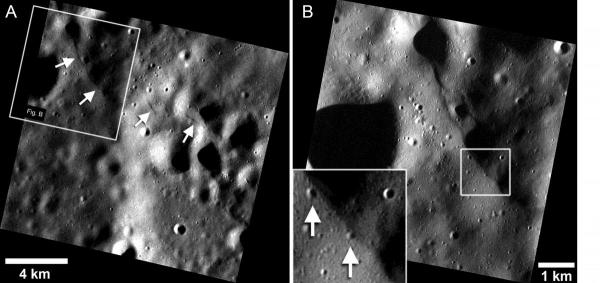Mercury - a geologically active planet

The closest planet to the Sun is Mercury. Astronomers have spent many decades studying the planet, but there are still more questions than answers. On the other hand, it is known a lot about Mercury too. For example, scientists know that the concentration of iron in the core of Mercury is higher than that of any other planet in the solar system. There are several possible explanations for this fact. The generally accepted theory says that initially the planet closest to the Sun had as many metals and silicates as an ordinary meteorite. At the same time, the mass of Mercury was 2.25 times greater than now.
But at the very beginning of its existence, Mercury collided with some large body, as a result of which most of the crust and mantle separated from the planet. Accordingly, the relative share of the core of Mercury has increased. This theory looks somewhat dubious after the elemental composition of the surface of Mercury was studied by the probe “Messenger”.
As it turned out, Mercury is rich in potassium. But this element should not be much on the planet that has experienced a major collision. During the impact, sufficient for the loss of part of the crust and the mantle, the planet should have been very hot, and potassium would simply evaporate. Now scientists are trying to explain this fact. And while they are looking for an explanation, another feature of the planet has become clear: it turns out that it is still geologically active.
')
Astronomers have studied the latest snapshots of the Messenger probe. The images clearly show traces of recent tectonic processes. And this indicates that geological processes are still taking place on Mercury.
“Messenger” (Mercury Surface, Space ENvironment, GEochemistry and Ranging - MESSENGER) - American automated interplanetary station (AMC) for the study of Mercury . This probe transmitted to Earth a large amount of data about the planet closest to the Sun. Before the Messenger, it was investigated by another device - the Mariner-10 . He flew near the planet in the 70s. Then managed to get photos of almost half of the surface of Mercury. True, scientists did not receive data on the chemical composition or structure of the planet - this device was not equipped with the necessary instruments. The technologies of that time did not yet allow the creation of relatively small probes with complex scientific instruments. In order to better explore Mercury, NASA launched the Messenger in 2004.
This device helped to fill a number of gaps in the study of the planet. For example, in 2011, it turned out that the magnetic center is located not at all in the center of the planet, such as, for example, the magnetic center of the Earth. It is shifted to the north, which causes the deformation and magnetic field of Mercury. In addition, the "Messenger" found traces of volcanic activity. It is also considered to be the presence of water ice in the craters at the poles of the planet.

Thomas Watters (Thomas Watters) from the Smithsonian Institution in Washington (USA) took the lead in studying images of the planet that were transferred by the Messenger just before its destruction. At the end of 2014, the Messenger ran out of fuel , making it impossible to correct the orbit. Gradually, the pericenter began to shift lower and lower towards the surface of Mercury. April 30, 2015 "Messenger" completed its mission, breaking on the surface of the planet.
The photographs were able to examine the surface of Mercury in detail. In particular, scientists have seen many faults that divide the flat regions of the planet into polygons. Previously, these faults were considered traces of the tectonic activity of the planet in its distant past. Planetologists believed that hundreds of millions of years ago, Mercury cooled, its size decreased, and the surface was covered with irregularities.

The probe "Messenger" during assembly (source: NASA )
But it seems that these processes are happening now. The fact is that faults were also found in relatively young craters. If the planet were geologically dead for hundreds of millions of years, then such traces simply could not appear. Therefore, Watters is sure that even 50 million years ago geological processes took place on Mercury. Most likely, they occur now. True, it remains to be proved. New data scientists hope to receive from the BepiColombo probe. This probe is sent to the first planet of our solar system in two years, in April 2018.
“The relative youth of faults on the surface of Mercury means that this planet, like the Earth, is geologically active. Mercury continues to cool, and its surface gradually changes, ”write the research participants in their work.
If Mercury is a truly geologically active planet, then NASA can implement a project to land on its surface with an apparatus equipped with a seismometer. This will help clarify the details of the activity of the subsoil of Mercury. More scientists have to figure out why the core of this small planet is still not cooled. The fact that the core is liquid proves that the planet has a magnetic field.
Source: https://habr.com/ru/post/397947/
All Articles